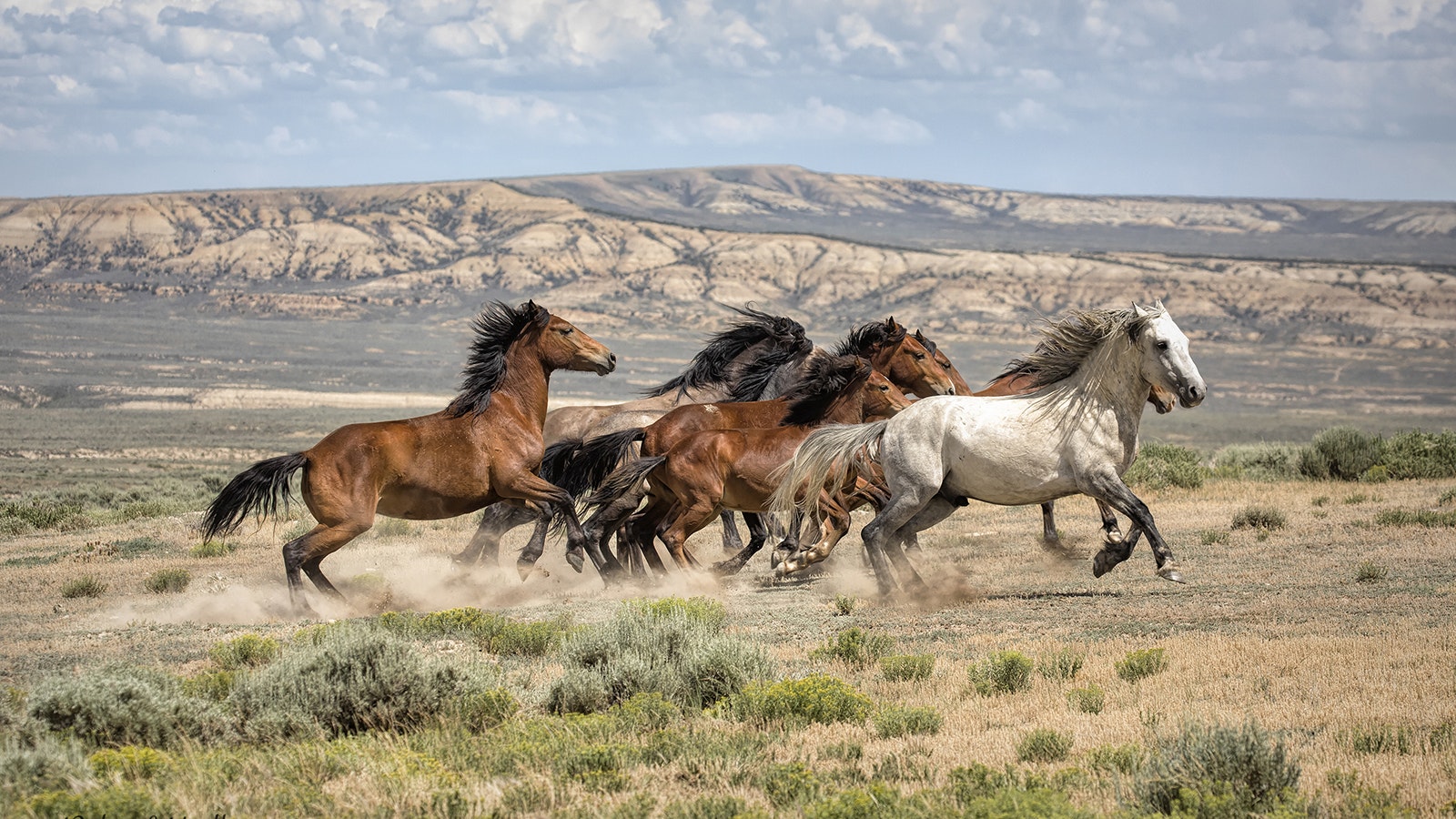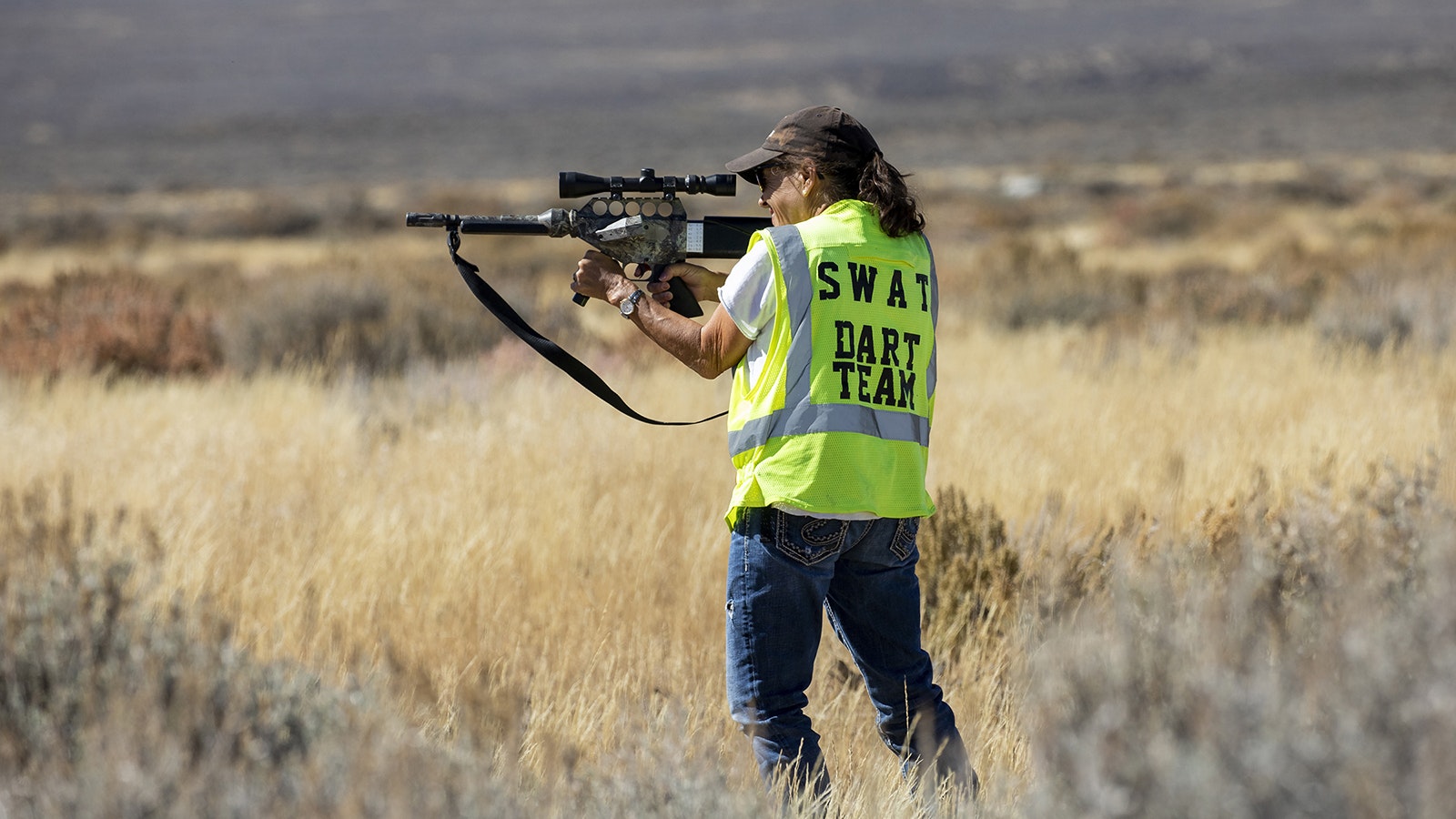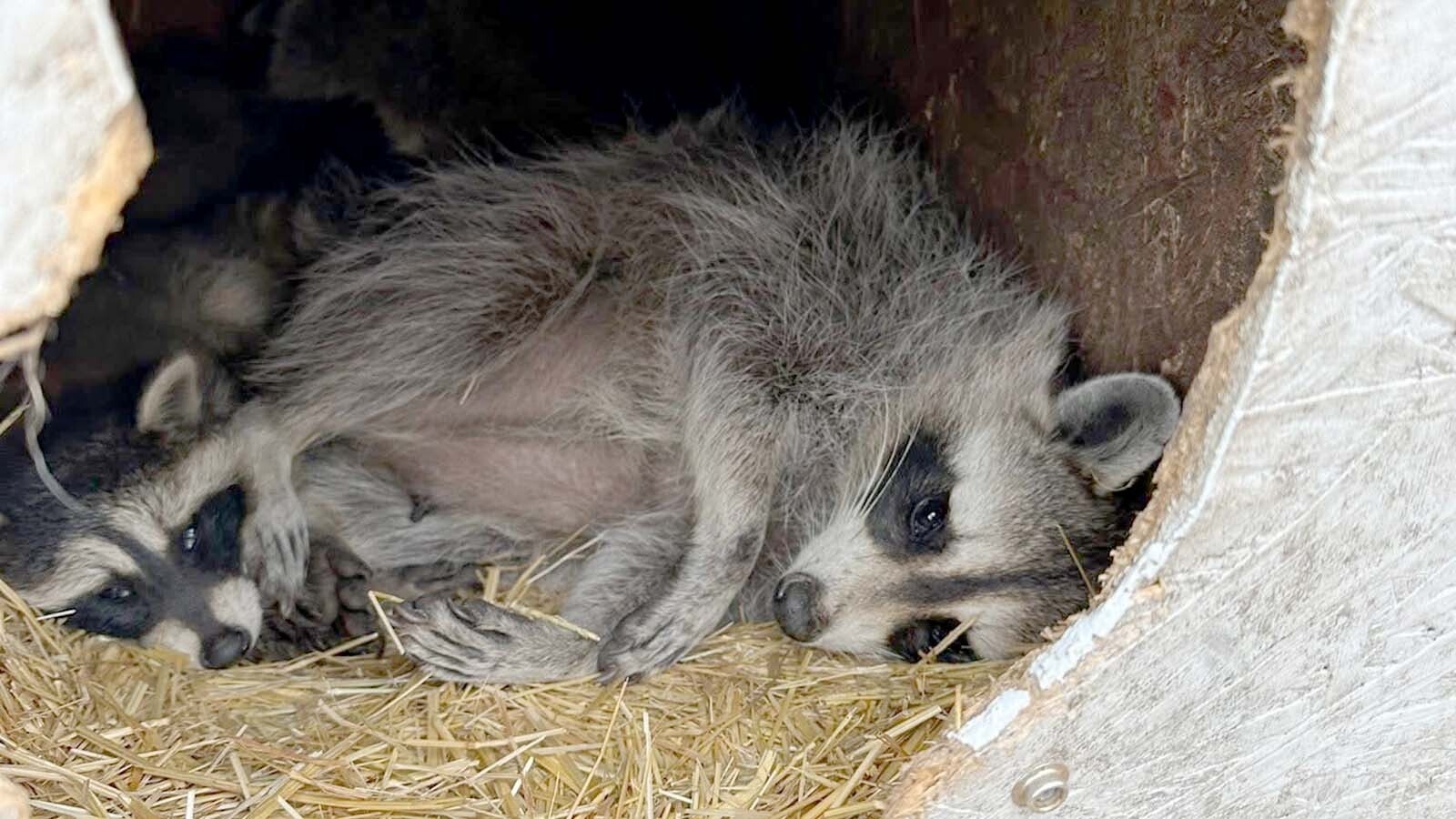In Colorado, mustang numbers are kept in check by volunteers who prowl the range, shooting female horses with darts loaded with fertility-control drugs.
Advocates say that it’s working and spares Colorado wild horse herds from helicopter roundups that have ignited controversy in Wyoming, Nevada and other Western states.
The effectiveness of fertility-control darting is extremely limited in Wyoming, where the rangelands are vast and the mustang herds much larger than those in Colorado, a retired Bureau of Land Management (BLM) official said.
When mustangs are darted in Wyoming, it’s done by BLM personnel, not volunteers.
Volunteers used to dart wild horse mares (adult females) in Wyoming, but due to “concerns for safety,” that practice was stopped, BLM Wyoming spokeswoman Allegra Keenoo told Cowboy State Daily.
A Better Alternative To Roundups
Colorado resident Robin Wadhams and her husband, Gary, have volunteered to dart mustang mares since 2017.
They focus on the Sand Wash Basin Herd Management Area (HMA) near Maybell, Colorado, a tiny community west of Craig.
The appropriate management level (AML) for the Sand Wash Basin herd is 163 to 362 horses, on roughly 158,000 acres.
The herd is thought to be slightly above the AML at present, but Robin Wadhams told Cowboy State Daily that she hopes the darting will prevent the need for roundups.
Fertility-control darting “is the only humane option we have right now to lower the numbers in the HMA,” she said.
The Wadhams are part of a volunteer group called Sand Wash Advocate Team (SWAT).
In 2023, the Colorado Legislature passed SB23-275, the Colorado Wild Horse Project Bill. Among other things, it established coordination between the state department of agriculture, the BLM and volunteer groups such as SWAT.
The act also established fertility-control darting as a key element of managing mustangs on all four of Colorado’s herd management areas. An anti-fertility vaccine called PZP is typically used.

Roundups Are Controversial
The BLM was put in charge of wild mustang herds under the 1971 Wild Free-Roaming Horses and Burros Act.
Periodic roundups are the main method of controlling the number of mustangs running free on the range across the West.
Critics say the roundups are cruel and unnecessary, as helicopters are used to drive mustangs into holding corrals.
Others argue that the mustangs are a feral, invasive species, and their numbers must be kept in check to protect the rangeland environment and native wild animals, such as mule deer.
Horses taken during roundups are kept at BLM holding facilities, such as one just outside of Rock Springs. Many of the mustangs are adopted out, but some languish for years in the holding facilities.
Why Not In Wyoming?
While volunteer darting programs might work in Colorado, they probably wouldn’t be effective in most of Wyoming, former BLM official Jenny Lesieutre told Cowboy State Daily.
Compared to Colorado’s four HMAs, Wyoming has 14.
And most of Wyoming’s HMAs are gigantic, said Lesieutre, who was the BLM’s state lead for the Wyoming wild horse and burro program before becoming the agency’s wild horse and burro public affairs specialist in Nevada.
Mustang herds also move around frequently in places like Salt Wells Creek and Adobe Town — in or near Wyoming’s vast Red Desert, she said.
“Those HMAs are so huge, are right on top of each other and those animals aren’t very domesticated. There are a lot of springs and water sources, so those horses are always moving,” Lesieutre said.
And with larger herds, sometimes numbering in the thousands of horses, it’s practically impossible to keep track of which mares have been darted, versus those who need another dose of fertility control, she said.
McCullough Peaks The Exception
In one exception in Wyoming, fertility-control darting has been effective with the McCullough Peaks mustang herd, Lesieutre said.
That’s because circumstances there are better for darting than in most other parts of the state.
It’s a relatively small herd, and many of the horses there are uniquely colorful, making it much easier to identify individual mares and track their fertility control, she said.
There are also man-made water wells there that the McCullough Peaks mustangs use, making it easier to find specific horses in specific places, she said.
PZP doesn’t prevent mares from going into heat and attracting stallions (adult male horses) for mating.
Instead, it “coats the eggs” of mares, to inhibit fertilization, Lesieutre said.
It’s not 100 % effective, and it needs to be administered about once a year, she said.
The best time to do it is right after a mare has given birth, to help ensure she doesn’t get pregnant the next time she goes into heat, Lesieutre said.
That’s why it’s important to identify specific mares and know their vaccination status, she said.

Knowing The Herd
After visiting the Sand Wash Basin herd so many times over the years, Wadhams said that she and her husband have gotten to know many of the mares by sight, which helps them focus their efforts.
“You have to keep records of all the mares you dart,” she said.
Keeping track of the herd and keeping up with fertility control is not an easy undertaking, Wadhams said.
“It’s miles and miles of hiking. Or flat tires and everything else,” she said.
Accuracy also counts. Wadhams said that she and her husband aren’t comfortable taking shots from more than about 40 yards.
Lesieutre said that shot placement is vital for PZP to be effective.
“You’ve got to get them (mares) in the butt muscle area,” she said.
Mark Heinz can be reached at mark@cowboystatedaily.com.





